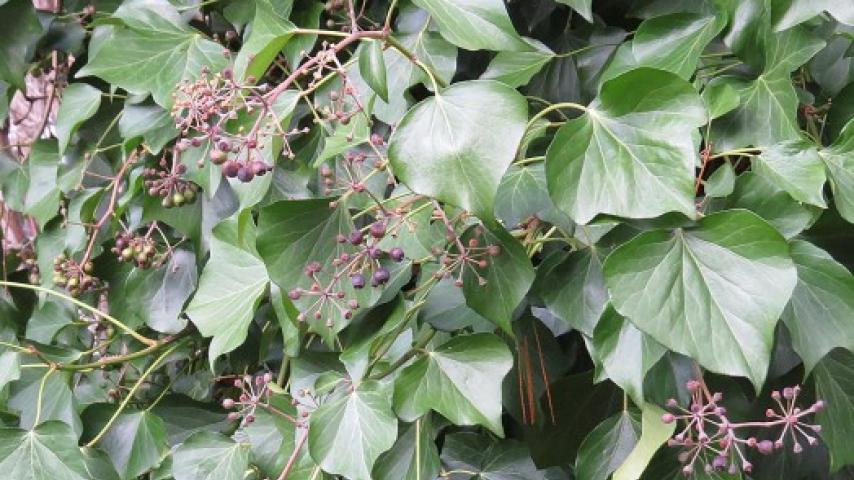Common Ivy (Hedera helix)
Common Ivy is a vine with dense, relatively small leaves with pointed, palmately lobed leaves.

KINGDOM Plantae - PHYLUM Anthophyta - CLASS Eudicotyledonae - ORDER Apiales - FAMILY Araliaceae
It can grow as ground cover and then ascend right up the trunk of a tree, 30 m or more, attaching to just about any surface with tiny nano-scale globules that appear to act as some sort of superglue through molecular attraction. The plant actually alters the shape of its roots to mesh with the substrate, then extends tiny root hairs that pull back into complex shapes as they dry, firmly anchoring themselves to the ins and outs of the surface with very, very tiny hooks.
This plant is a well-known plant to city dwellers, as masses of it can be seen in parks and along city streets as it slowly climbs and surrounds the trunks of trees both native and planted.
Ivy appears to flower infrequently, but when it does, it changes dramatically. The shoots are thicker and upright rather than twining, and the leaves are cordate, lacking the lobes. The small, five-petalled, greenish flowers with abundant nectar are clumped in umbels. The plant flowers in autumn and produces dark purple berries with 1–5 seeds in late winter and spring.
The list of problems this plant causes is a long one and includes their smothering of smaller plants and keeping them from germinating, as well as covering and weighting tree trunks so they are more susceptible to wind damage. Its waxy leaves seem virtually impervious to herbicides, and no biological control agent has been discovered for it. In addition, its leaves and berries are toxic if consumed in quantities, and some people can develop dermatitis from contact with its sap.
This invasive species has been declared a pest throughout the Pacific Northwest, and home-owners are required in some localities to remove it from their yards. Containment is difficult, as birds eat the fruits and disperse the seeds far and wide in their feces. But volunteer crews of invasive-plant fighters have gone into many of our parks to strip it from the trees and pull it from the ground.

